.png)
How to Fix a Golf Slice: an explanation of the root causes and 3 effective drills for you to try out
Slicing the ball is like death and taxes. You can’t avoid it. And invariably, it’s the issue the majority of mid to high handicap golfers face. And it makes sense. When golfers try to swing the club hard, they use their upper body and arms (like any naturally athletic motion would encourage) which opens up the clubface and creates that beautiful, arching shot straight into the bush. But if you understand swing mechanics and practice intentionally, it’s actually the shot shape that is easiest to fix.
In this blog I want to provide an explanation of the root causes of a slice (to help you understand why a slice occurs) and outlines three drills (that have worked for me and backed by coaches) that focus on correcting the key swing faults responsible for slicing. By integrating these drills into your training routine, you can improve swing path, clubface orientation, and your shot shape.
At its core, what are the fundamental causes behind a golf slice?
At its core, a slice occurs when the clubface is open, relative to the path of the golf club as you swing through the golf ball. The following are the fundamental, root cause reasons why most golfers struggle with a slice:
- Poor alignment: Open shoulders (the feet pointing right or to the target, while your shoulders point left), creates a naturally out to in swing path as the club will naturally follow the path of the shoulders.
- Ball position too far backwards: can encourage you to cut across the ball or encourages an open club face at impact as the hands don’t have enough time to release the club face properly through impact.
- Over-the-top downswing: This occurs when the club is thrown over the plane during transition into the downswing (from the backswing), creating an out-to-in path. This path naturally promotes sidespin, which when paired with an open face, leads to a slice.
- Weak grip: A grip that is too weak (thumbs pointed straight down the shaft) can leave the clubface open at impact, exacerbating left-to-right spin.
- Lack of body rotation: Insufficient rotation through impact causes the arms and hands to dominate, leading to a casting motion and an open clubface.
At its core, each of these issues affects one of two things: (1) the club face; or (2) altering the direction of the swing arc, resulting in spin that curves the ball off the intended line.
So,what are some useful drills to help fix these issues?
Drill 1: Grip check
Your grip is the only point of contact with the club and minor grip changes can dramatically affect face orientation.
Check:
- Hold your club in a standard address position.
- Examine your left hand (for right-handed golfers). If you have a neutral grip, you should see two to three knuckles on your left hand.
- If you see fewer (a weak grip where you can see 1 or no knuckles), rotate your left hand more clockwise on the grip (to strengthen your grip).
- Check out what this looks like in the image below.
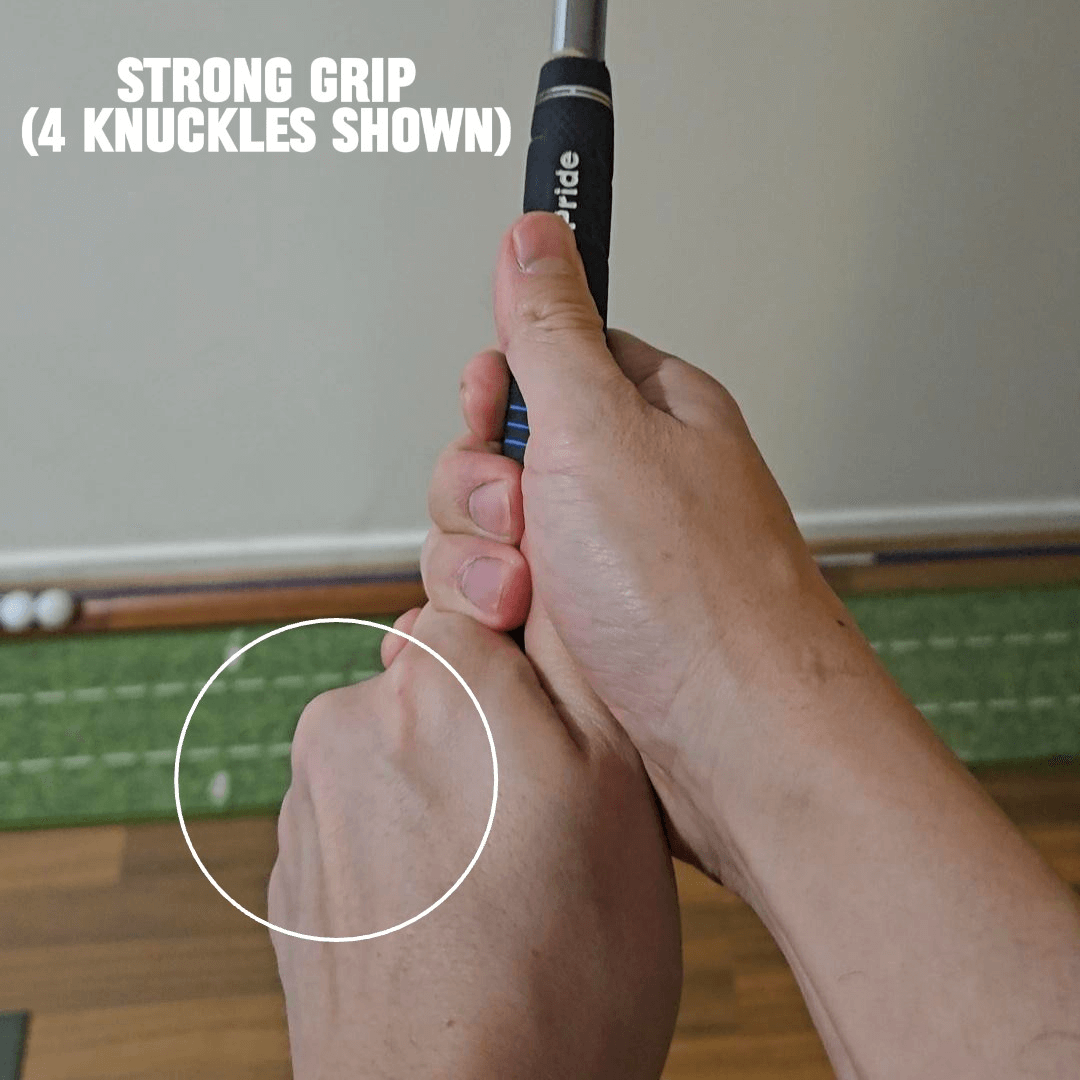
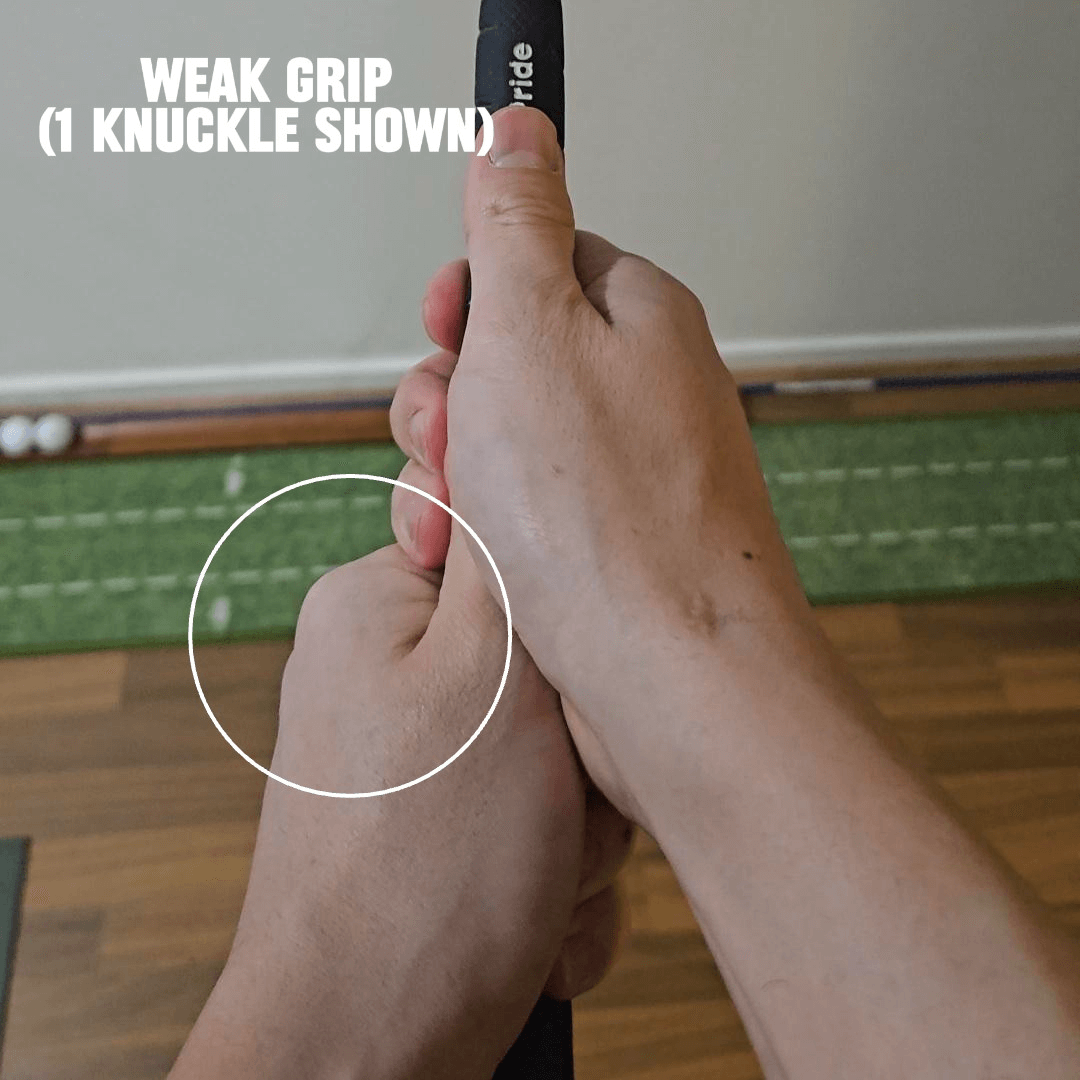
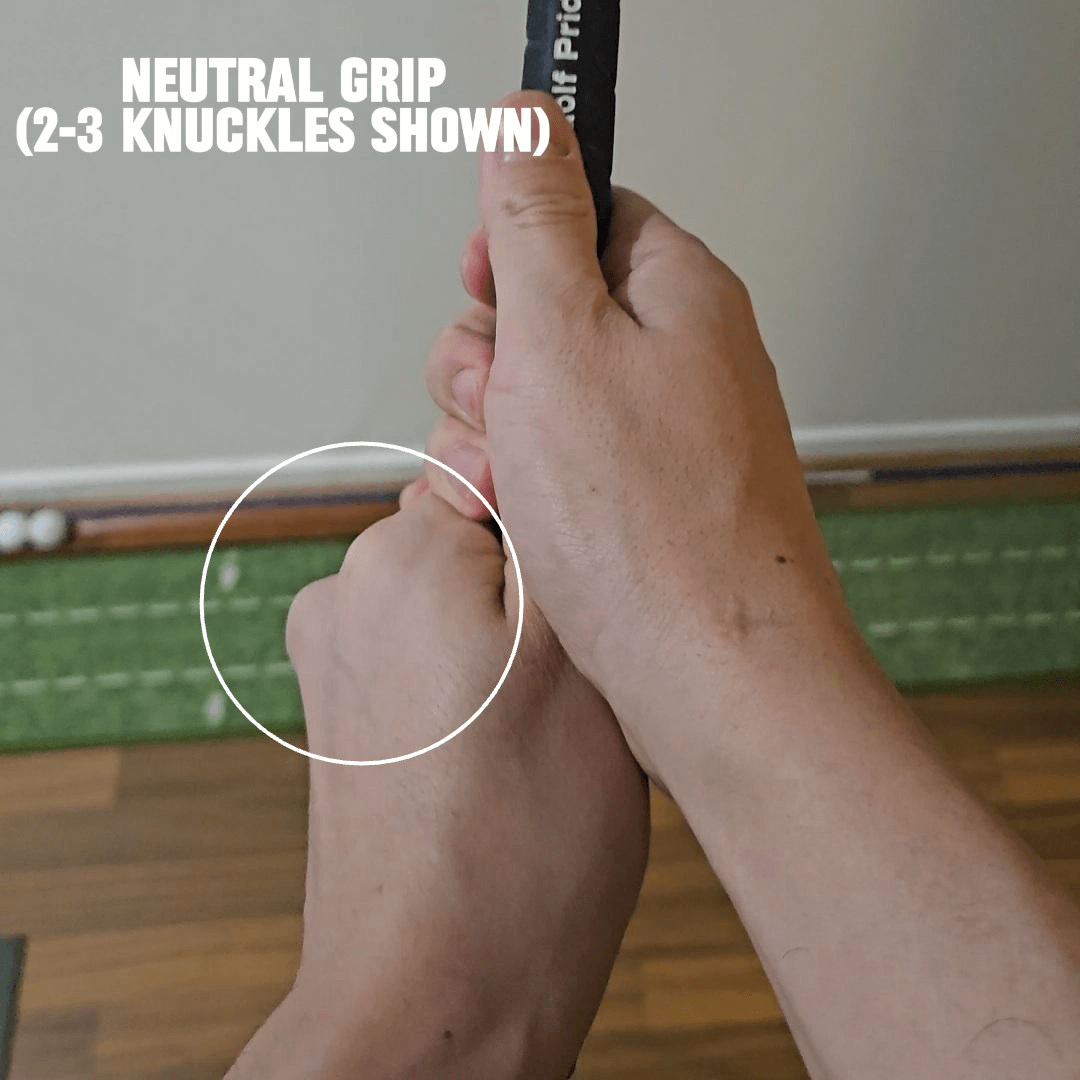
Why it works: A neutral-to-strong grip helps square or slightly close the clubface at impact, helping you to close that open clubface. This reduces the chances of leaving the face open, which is one of the primary contributors to slicing. A proper grip also enhances wrist control and face stability through the swing.
Drill 2: Underarm stability drill (towel drill)
This drill helps train your body to maintain proper arm-body connection throughout the swing and fix your swing path. Essentially, it helps your arms rotate together with your upper body, preventing them from deviating off your desired swing path into an over the top motion.
Drill:
- Place a towel under your armpit.
- Execute slow, controlled swings while keeping the towel pinned to your armpits and torso.
- If the towel drops mid-swing, you’re creating disconnect between your upper body and arms, which is often a sign of an over-the-top motion as your hands leave the swing plane and get over the top.
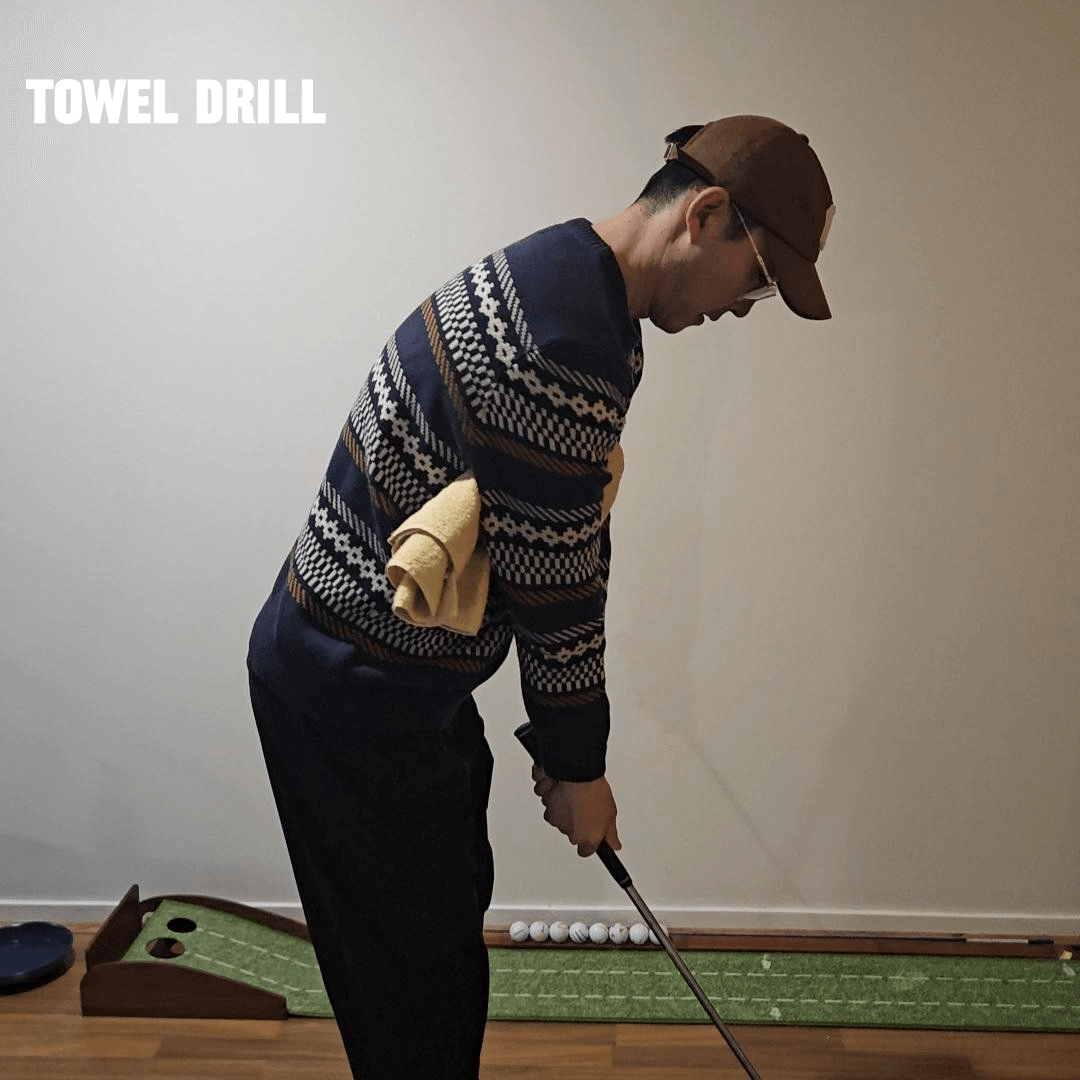

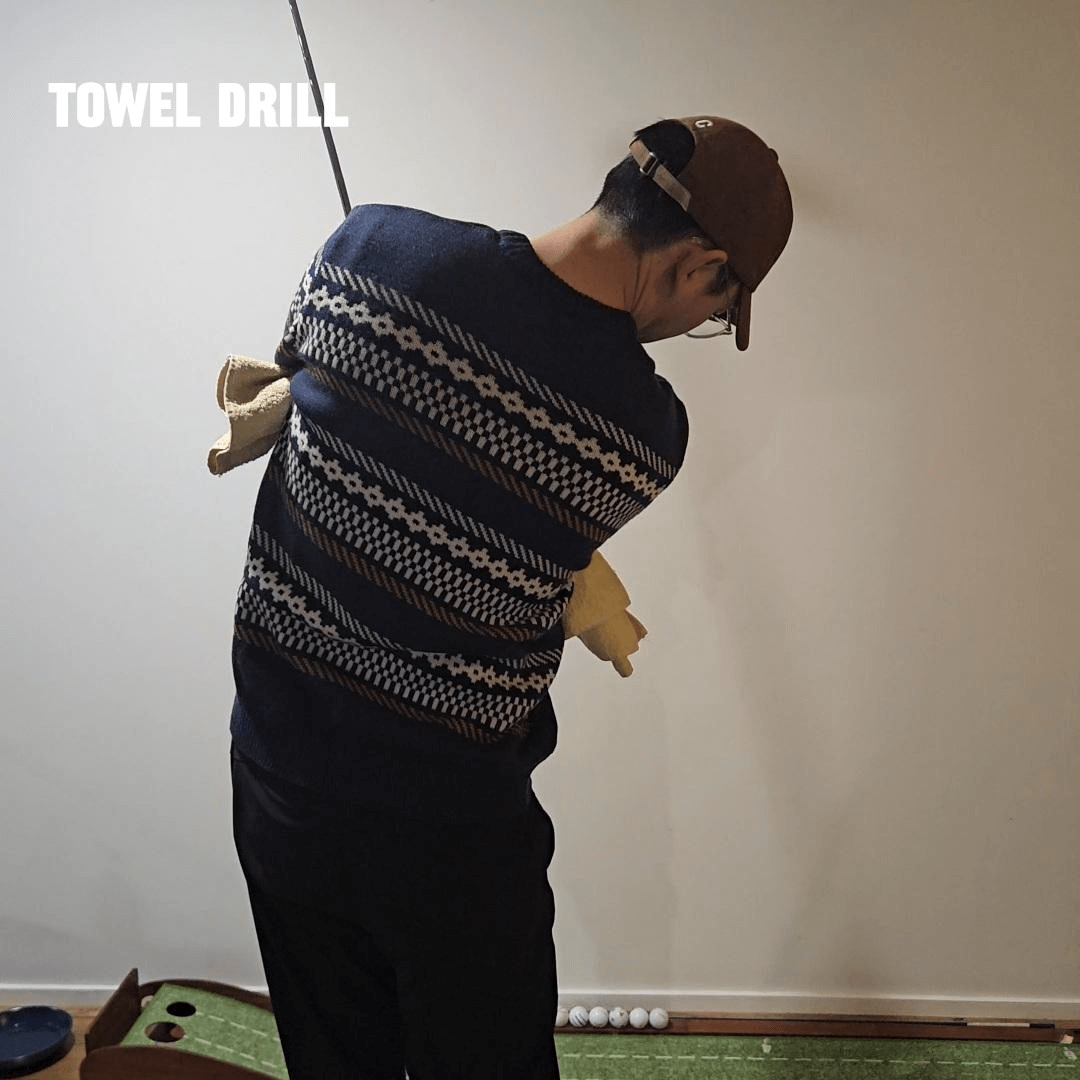
Why it works: Maintaining arm-body connection helps keep the club on plane and promotes an inside-out path. It discourages the over-the-top move by keeping the arms and hands closer to the body and to the original swing plane.
Drill 3: Swing path feedback gate (path drill)
This drill provides immediate feedback on your swing path, and helps reinforce proper path orientation.
Drill
- Set up to your ball
- Position a ball about a foot behind your teed up ball, and slightly outside of the target line. Place another ball about a foot ahead of the teed up ball, and slightly inside of the target line. The two balls should create a diagonal line.
- Take full swings, aiming to strike the ball cleanly without hitting either of the two balls placed either side of the ball you are hitting.
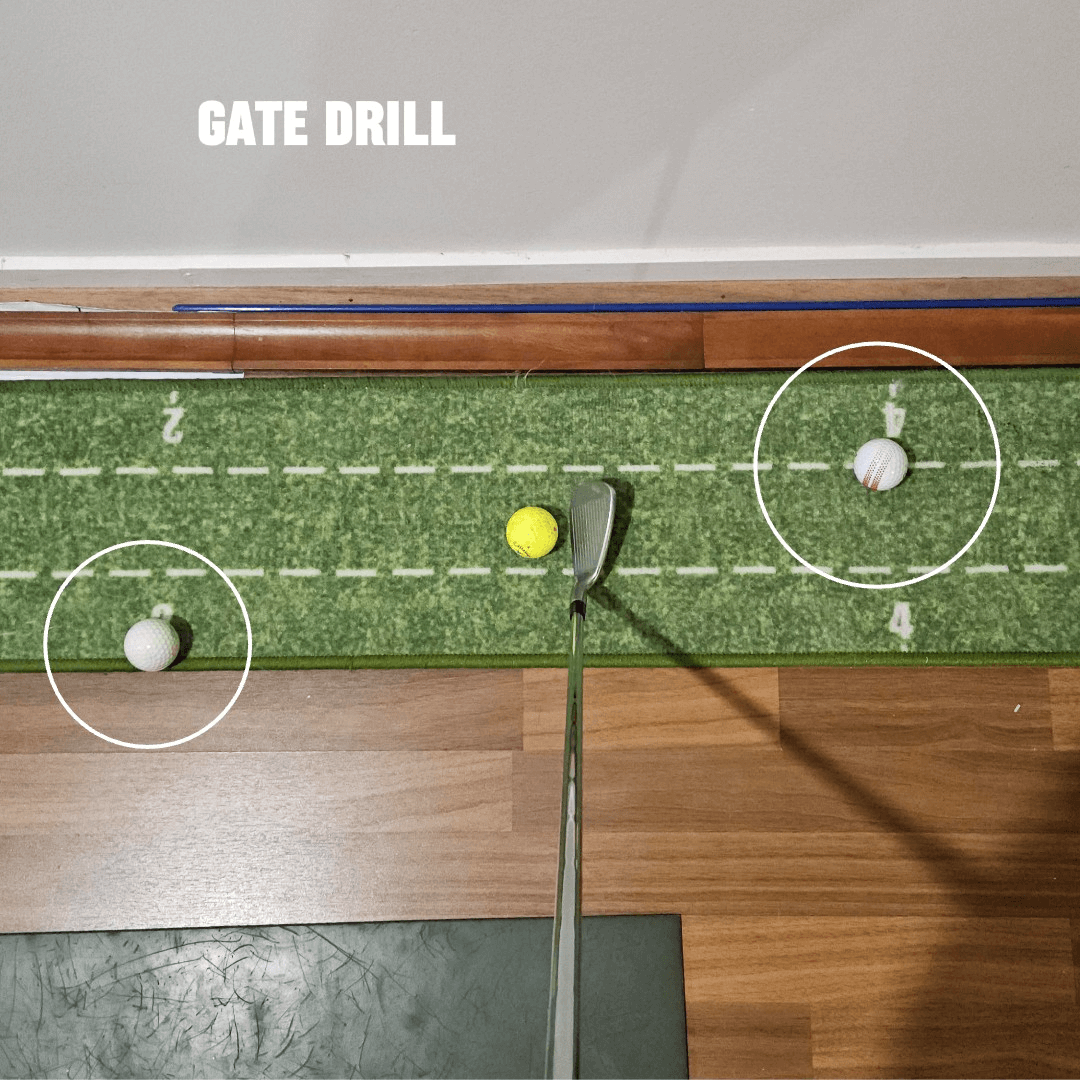
Why it works: This drill encourages a more inside-to-out swing path by penalizing swings that cut across the ball. Practicing this movement helps eliminate the outside-in path that commonly causes slices. It provides visual and tactile feedback to reinforce proper sequencing.
Summary
Correcting a slice requires you to understand the mechanics of the swing, and the root causes of a left to right spinning ball. These three drills can reshape your ball flight and fix that nasty slice you have.
Looking to take the next step? We’re building the world’s most advanced AI golf coach called Ryform Golf. Record your swing using our app, and it will analyse your major swing faults and recommend drills to fix those issues. Head to the website to download the app.
